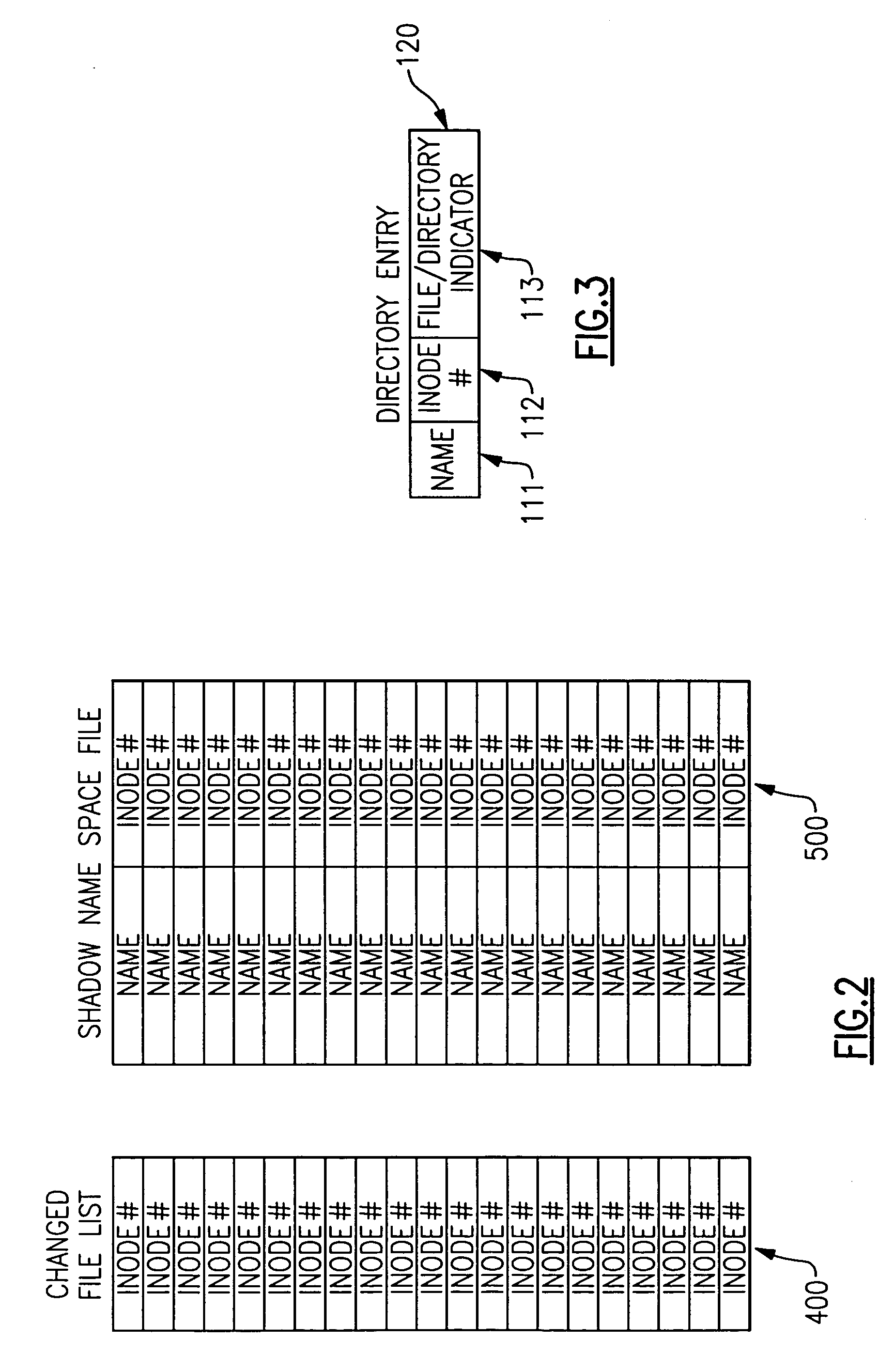Rapid restoration of file system usage in very large file systems
a file system and file system technology, applied in the field of very large file system management, can solve the problems that neither of these alternatives is wholly satisfactory, and achieve the effect of increasing the flexibility of both file system backup and restoration facilities and increasing the efficiency of operation
- Summary
- Abstract
- Description
- Claims
- Application Information
AI Technical Summary
Benefits of technology
Problems solved by technology
Method used
Image
Examples
Embodiment Construction
[0032]In order to provide a better understanding of the environment and the operation of the present invention, relevant parts and structures of the above-mentioned General Parallel File System (GPFS) are briefly reviewed. It is also noted that GPFS is similar to file systems conforming to the Xopen file system standard, and accordingly all such file systems are usable with the present invention. However, the present invention is not limited to such file systems. In general, it is noted that a file is composed of three basic parts: its attributes, its data and its name. In general, these three parts are stored in different places in various file system. The file's attributes, such as the file size, its creation time and its access permission, are stored in a file structure generally referred to in the file system arts as an inode. There is one inode file per file system. The inode also stores pointers to the file's data blocks, that is, pointers which indicate a physical location in...
PUM
 Login to View More
Login to View More Abstract
Description
Claims
Application Information
 Login to View More
Login to View More - R&D
- Intellectual Property
- Life Sciences
- Materials
- Tech Scout
- Unparalleled Data Quality
- Higher Quality Content
- 60% Fewer Hallucinations
Browse by: Latest US Patents, China's latest patents, Technical Efficacy Thesaurus, Application Domain, Technology Topic, Popular Technical Reports.
© 2025 PatSnap. All rights reserved.Legal|Privacy policy|Modern Slavery Act Transparency Statement|Sitemap|About US| Contact US: help@patsnap.com



